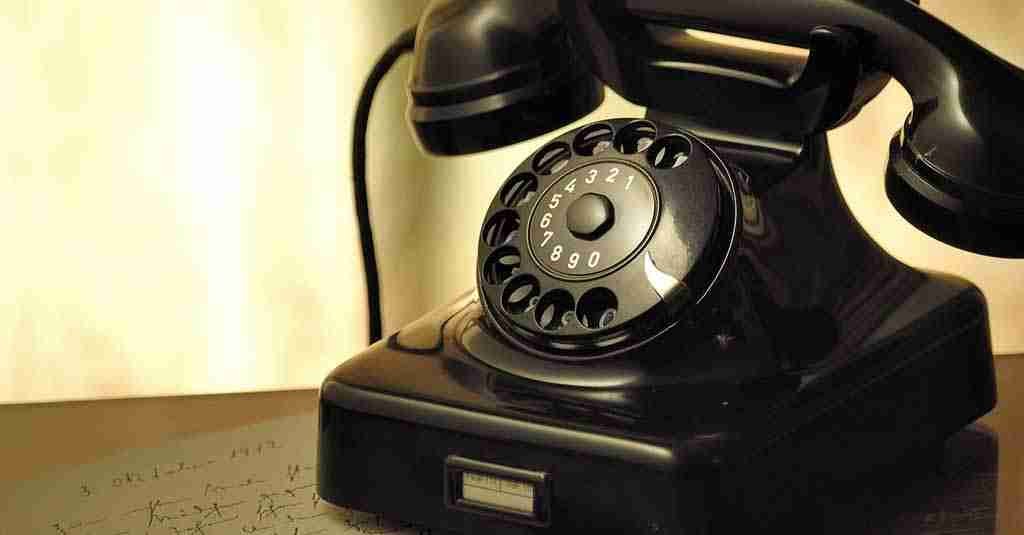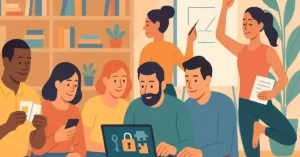Introduction
You might ask yourself, is there still a need to remember a telephone number? Our phones can store an entire phonebook of numbers, so what’s the point?
Generally, I would agree. Storing most numbers in a phone and letting technology do the work for you is easier. However, I was in a car accident once, and my phone broke. Someone came down the road and had the courtesy to offer me their phone to make a call. The only problem was that I didn’t know any phone numbers. I had delegated that task to my phone.
Truthfully, I don’t think there is much point in keeping tons of phone numbers stored in your head, except for the most important ones. Shouldn’t you have those memorized, just in case you don’t have the information with you?
I would argue that it is critical to remember a handful of phone numbers in case of an emergency, so here is a method to easily keep those numbers alive in your memory.
How to Remember Phone Numbers
To remember telephone numbers, we will employ the major system and create a phrase we will associate with the person or business.
Step One
First, let’s recall the major system:
0 – s, z, soft c
1 – t, d
2 – n
3 – m
4 – r
5 – l
6 – sh, ch
7 – k, hard c
8 – f, v
9 – p, b
Step Two
Using the example below, we need to convert the numbers into letters. We will work with seven-digit phone numbers because, hopefully, you know the area code. If you don’t know the area code, you can always work it into this memory technique.
Here are the three numbers to remember:
- 591-8022 – The school where I work.
- 623-5479 – My wife.
- 965-0041 – My son.
Transcribing the numbers, we get the following:
- 5 = l, 9 = p/b, 1 = t/d, 8 = f/v, 0 = s/z/c, 2 = n, 2 = n
- 6 = sh/sc, 2 = n, 3 = m, 5 = l, 4 = r, 7 = k/c, 9 = p/b
- 9 = p/b, 6 = sh/ch, 5 = l, 0 = s/z/c, 0 = s/z/c, 4 = r, 1 = t/d
Step Three
The next step is to create catchy words and phrases to tie into the person or business we want to remember. That way, when I want to remember my wife’s phone number, the connection between my wife and the phrase will help me recall the number.
In this part, some people use multiple consonant sounds representing numbers in the same word. I have found this can be inconsistent and confusing. I may make a mistake if I genuinely rely on the mnemonic. Some consonant sounds may not belong to the number set I wish to remember.
To avoid this, I only use one consonant sound at the beginning of each word to represent the associated number. It’s consistent and clean.
Now, let’s encode these numbers:
The School Number
5 = l = lasting
9 = p/b = public
1 = t/d = education
8 = f/v = funky
0 = s/z/c = school
2 = n = knock
2 = n = knock
This mnemonic works for me because I believe in the lasting power of public education. The next part makes me think of a James Brown song, and I can see myself knocking on the school doors in time with the music. So, if I want to remember the number, I only need to think about the school, then associate Lasting Public Education: Funky school, knock knock.
My Wife’s Numer
6 = sh/sc = she
2 = n = never
3 = m = minded
5 = l = licking
4 = r = roasted
7 = k/c = coffee
9 = p/b = beans
That’s a fun one because she hates coffee. So, the image of my wife shrugging before licking roasted coffee beans is quite amusing! The phrase is: She never minded licking roasted coffee beans.
My Son’s Number
9 = p/b = boys
6 = sh/ch = chew
5 = l = like
0 = s/z/c = silly
0 = s/z/c = string
4 = r = running
1 = t/d = downstairs
My image is my son with silly string spewing out of his mouth while he runs downstairs. With an image like that, it’s easy to remember that Boys chew like silly string running downstairs.
Step Four
Once you have figured out your phrases, go over the images a few times. Use spaced repetition and active recall to reinforce the ideas and numbers.
At first, using the major system is a laborious process. Yet, it doesn’t take long before transcribing numbers to letters and back becomes quick and painless. Have patience!
Join Conrad Andrews on Facebook to get updates on the latest techniques in learning.






